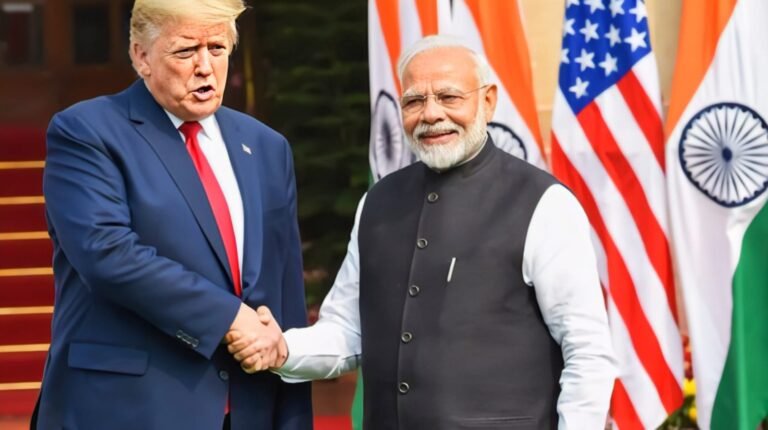
India’s crude oil imports from Russia face uncertainty after new US sanctions on Russian energy giants Rosneft and Lukoil
Introduction
Over the past few years, Russia has adopted new buyer-market policies amid challenges to its oil/gas policies and Western sanctions following the Ukraine war. Consequently, India has significantly increased its crude oil imports from Russia, as Russia has provided oil at discounted prices and at attractive prices compared to other traditional sources. However, the Trump administration has now imposed new sanctions on major Russian oil companies, Rosneft PJSC and Lukoil PJSC, raising serious questions about India-Russia oil trade.
Current Scenario: India-Russia Oil Trade Status
Reasons Behind Russian Imports Discounted Prices: Russia sought to sell its oil to countries that could take advantage of this opportunity due to Western sanctions India saw this discount as an advantage. Benefits and Risks for India from Russian Oil Imports: Lower rates, which helped keep India’s energy costs low. Russia saw an opportunity to become a significant customer, providing it with a new market amid Western sanctions. India provided ample raw materials to its refining industry (especially large private refiners like Reliance Industries Limited). The risk was the possibility of the uninterrupted flow of Russian oil being disrupted at some point.
Challenges Facing India
Supply/Shipping and Payment Channels Imports from Russia often involved third-party intermediaries, shipping brokers, “shadow float” tankers, etc., to circumvent sanctions. Following Trump’s warning of secondary sanctions, Indian refiners and banks now face the risk of US sanctions if Russian oil transactions are found to be going through Rosneft or Lukoil. Payments could impact dollar-sourced banking systems, insurance, tanker fleet insurance, and other related services. A refiner source said: “It all depends on banksIf banks don’t clear payments, my intake will be zero.”
Pressure on India-US Trade and Diplomacy
The US has signaled to India that if it continues to import Russian oil, it could face increased retaliatory tariffs on Indian products in the US market and US trade agreements. For example, last month, the US threatened to impose tariffs of up to 50% on Indian goods as punishment for India’s failure to stop Russian oil imports.
Potential Strategic Options for India
India must balance its trade relations with the United States balancing the challenges of US pressure with energy security needs. Completely abandoning relations with Russia appears unlikely (as the two countries have a strategic partnership). Therefore, India must readjust its agreements with Russia such as reducing net Russian oil imports, minimizing transactions through third-party intermediaries, etc. Additionally, India must work toward making its defense and energy partnerships multilateral avoiding excessive dependence on any one partner. Emergency Strategy: If Russian oil flows suddenly cease, India must be prepared for immediate alternative sources.
Concerns and Challenges Ahead
Impact on the Global Oil Market: A decrease in oil imports from Russia could reduce global supply options, leading to higher oil prices. Indeed, there are indications that oil prices have already risen. The challenge for India is that if new, cheaper alternatives are not found, consumers may ultimately face higher prices. In a sensitive political environment, increased energy prices could fuel social unrest. Financially, risks for banks, insurance companies, and shipping companies will increase impacting investment sentiment. Timeframe and Pace of Transition Russian oil imports are unlikely to stop suddenly sources indicate that “some barrels will still arrive through intermediaries However, the transition could be rapid if banks halt transactions or billing channels are shut down. The timeframe for India will be challenging new sources will need to be established quickly and existing Russian deals adjusted.
Refiners and vibrant oil companies will seek new sources.
Oil prices are likely to become volatile if global supply chains are not restored. India’s energy import costs could increase. Tensions could escalate in US-India trade talks. Medium- to long-term (3-5 years): India will restructure its energy import structure new sources, logistics, long-term contracts, etc. will be established. Domestic energy production and alternative energy sources will be promoted Strategically, India-Russia relations will no longer be solely based on oil other sectors such as defense, nuclear energy, fertilizers, etc. will receive greater focus.
US-India Trade Understanding The economy can be reshaped the energy share can be incorporated land-based. Potential risk scenarios: If India doesn’t make the right choices in time, it will have to import expensive oil which could lead to inflation and energy stress. If global oil prices rise, India’s economic growth could be impacted. Strategically, if India doesn’t yield to US pressure and Russian oil imports cease in large quantities, its energy security could be weakened.
Conclusion
This entire situation means that India is at a major decision point. Russian oil imports have played a key role in India’s energy strategy in recent years but now US sanctions could reverse that arrangement. The challenges for India are complex ensuring energy security, controlling costs, balancing strategic partnerships, and maintaining its independence in global geopolitics. The most important thing is to plan ahead, work towards source diversification, and be prepared for any unexpected disruptions. If India acts proactively, this could also become an opportunity India can future-proof its energy system If you’d like, I can prepare a special report on this topic, including India-Russia oil import statistics, a comparison of source options, and the share of energy in India-US trade agreements






